Abstract
1. The blood pressure response to ranatensin, an undecapeptide from the skin of the frog, Rana pipiens, has been studied in various experimental animals.
2. Ranatensin raised blood pressure in the dog and rabbit. The response was not altered by atropine, phentolamine, propranolol or hexamethonium, suggesting a direct peripheral vasoconstrictor action. In both animals ranatensin was about one-tenth as potent as angiotensin. Tachyphylaxis to ranatensin did occur, but there was no cross-tachyphylaxis with angiotensin, bradykinin, or noradrenaline.
3. The peptide lowered blood pressure in the monkey, being as potent as eledoisin. The response was not altered by atropine, phentolamine, propranolol, tripelennamine, tetraethylammonium, bretylium, or methysergide. This again suggests a direct peripheral action on vascular smooth muscle. There was no tachyphylaxis to the depressor action, nor was there cross-tachyphylaxis with angiotensin, eledoisin, bradykinin, or noradrenaline.
4. Ranatensin did not alter the blood pressure in cats and had a variable action in the guinea-pig with a rapid onset of tachyphylaxis.
5. Ranatensin has a variable effect on the blood pressure in the rat that is related to the basal level of blood pressure. When the blood pressure is high, the response to the peptide is hypotension. Ranatensin raises blood pressure in the rat when the basal blood pressure is low. The pressor response to ranatensin appears to be due, in part, to the release of noradrenaline from peripheral sympathetic nerve endings.
6. The composite action of ranatensin on blood pressure of various experimental animals is unlike that of any other peptide. Its hypertensive action in the dog or rabbit, together with a potent hypotensive action in the monkey, readily distinguishes it from all other vasoactive peptides.
Full text
PDF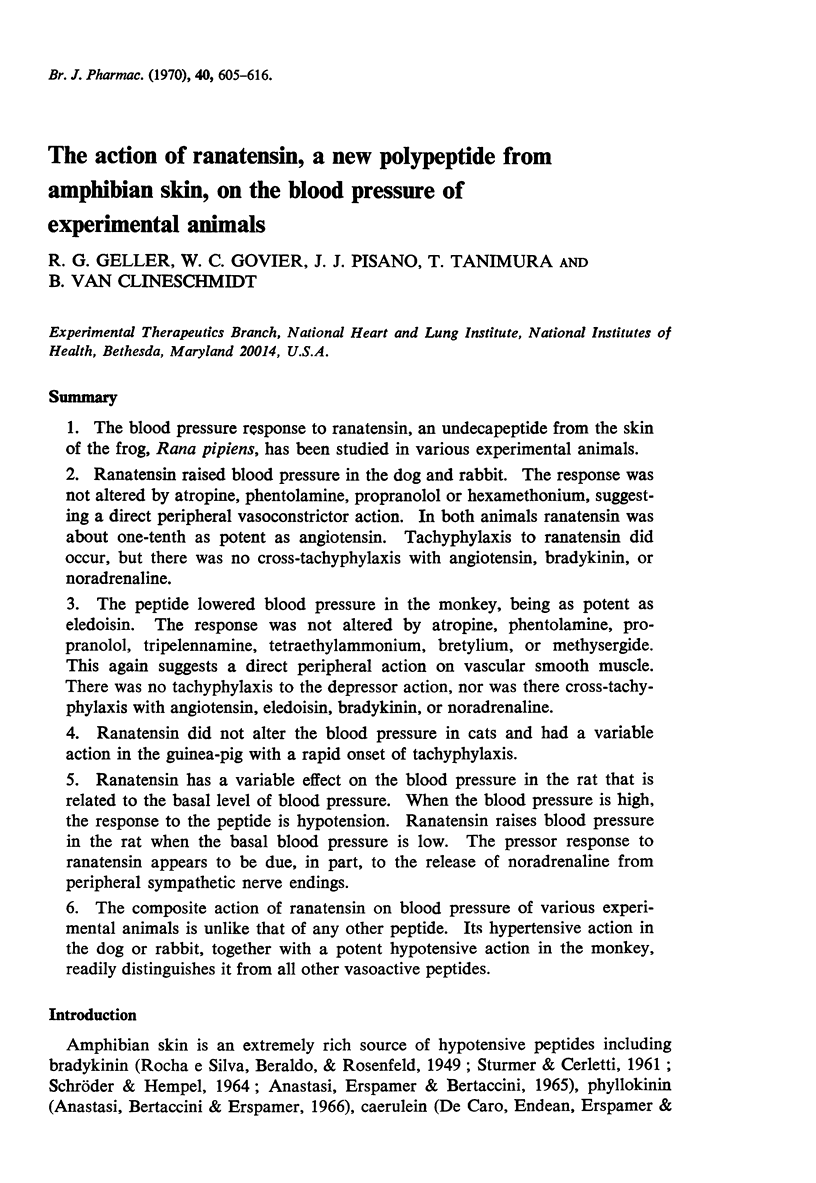
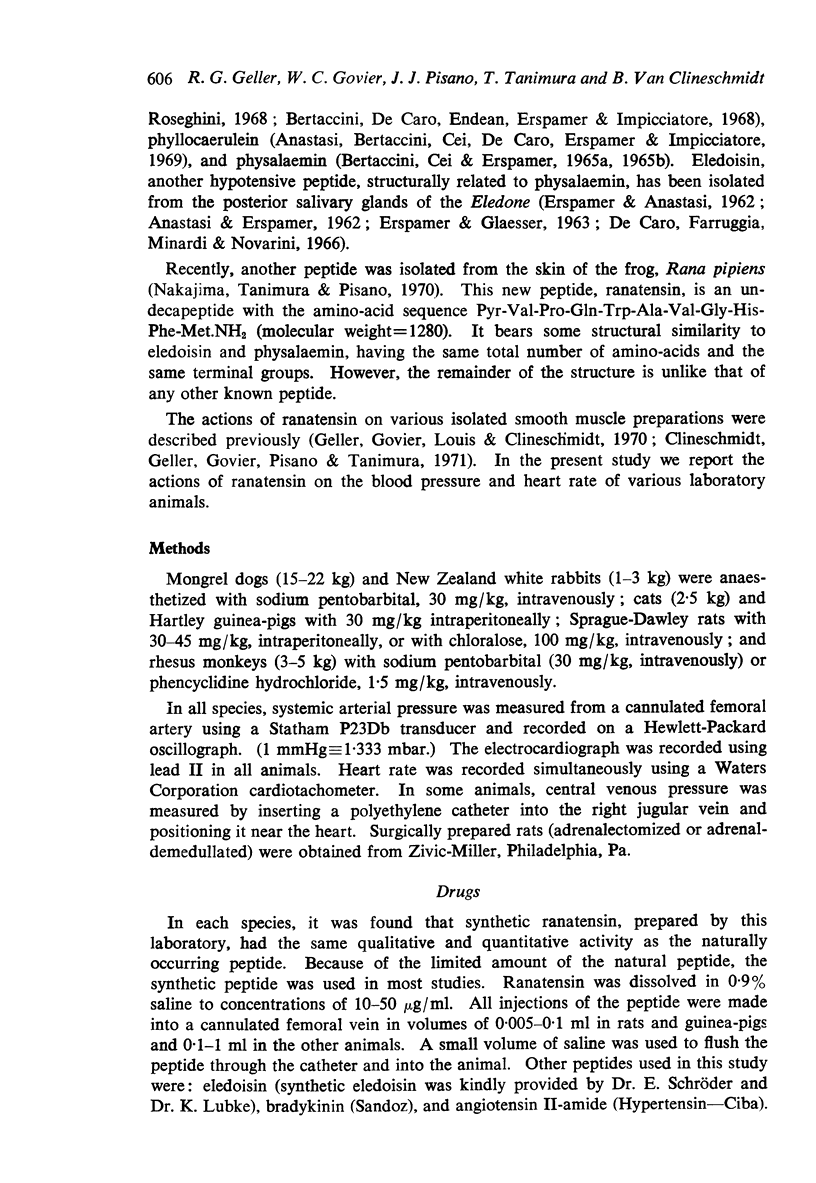
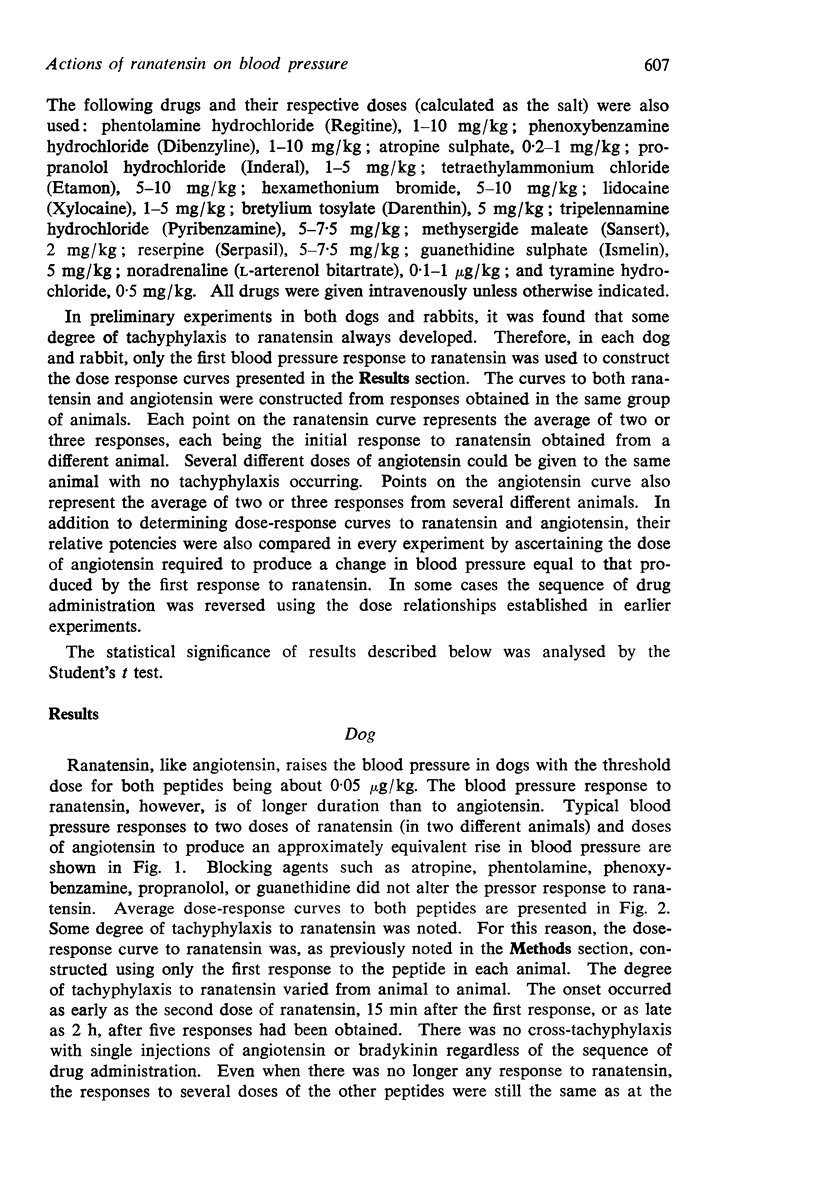
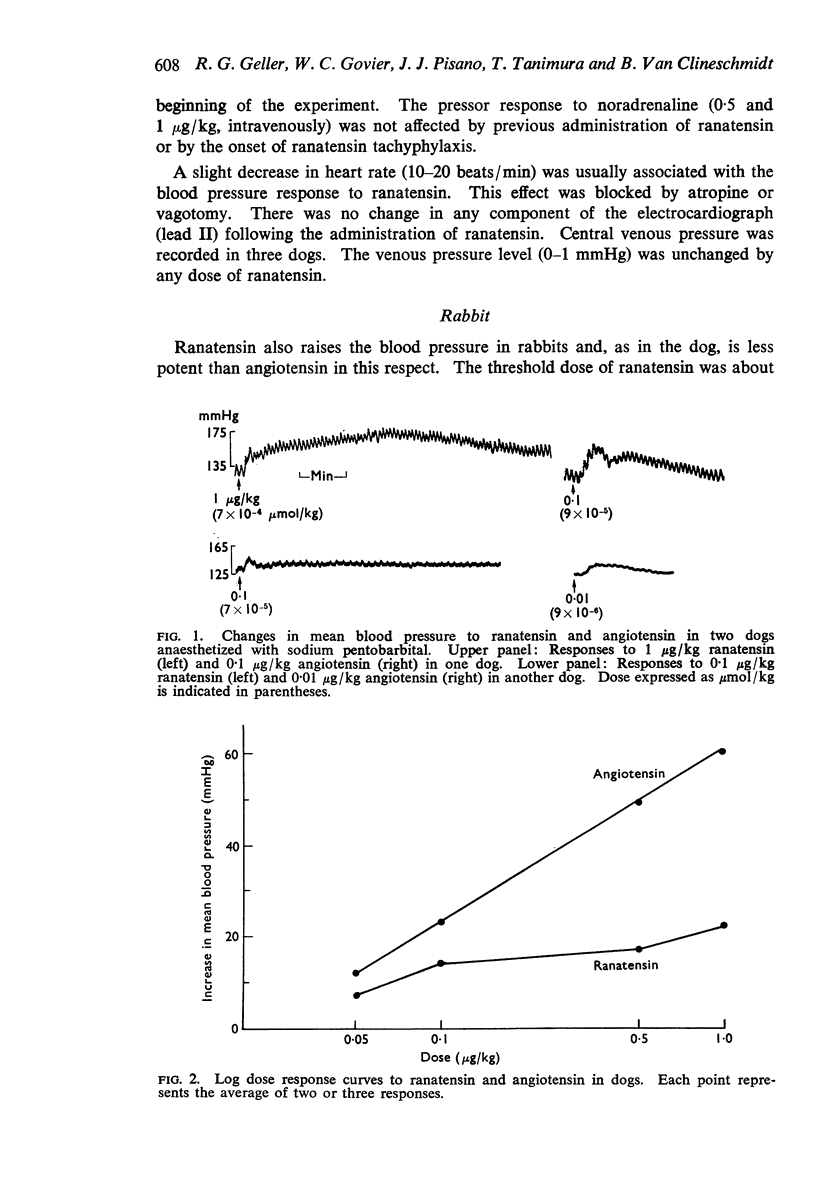
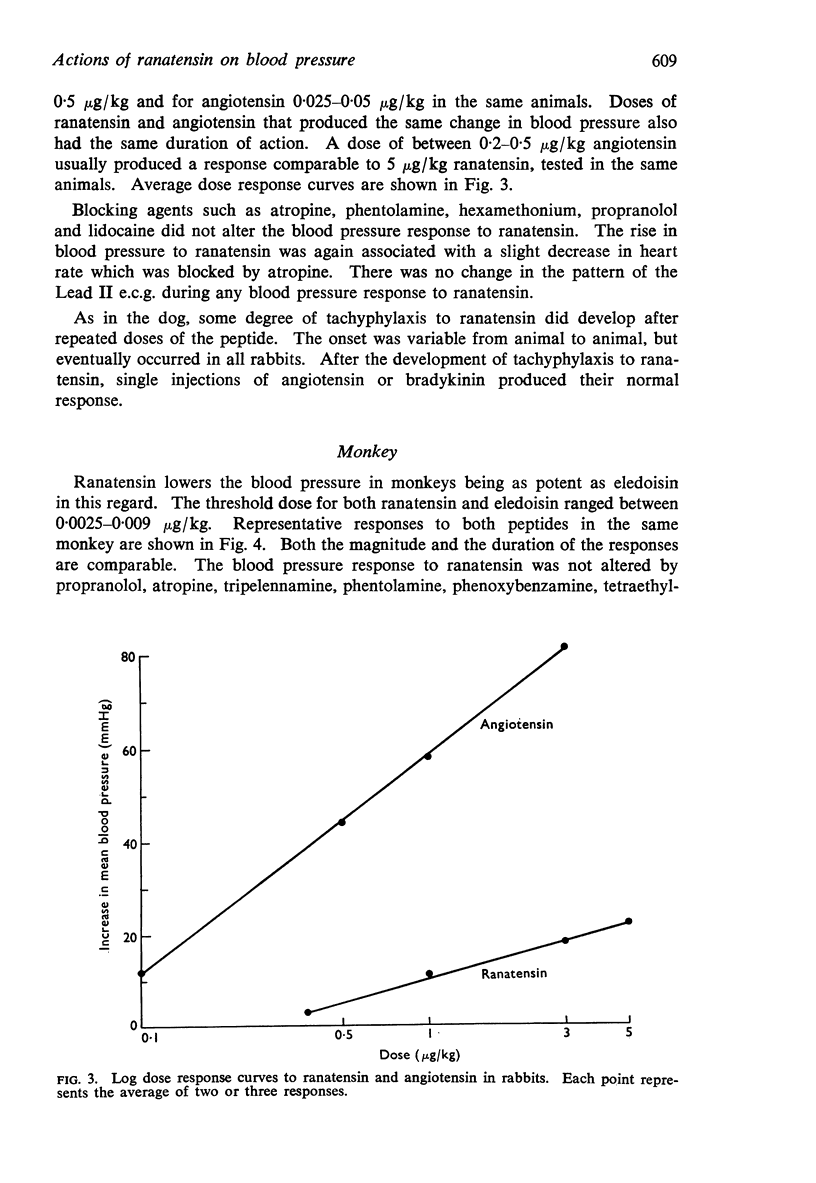
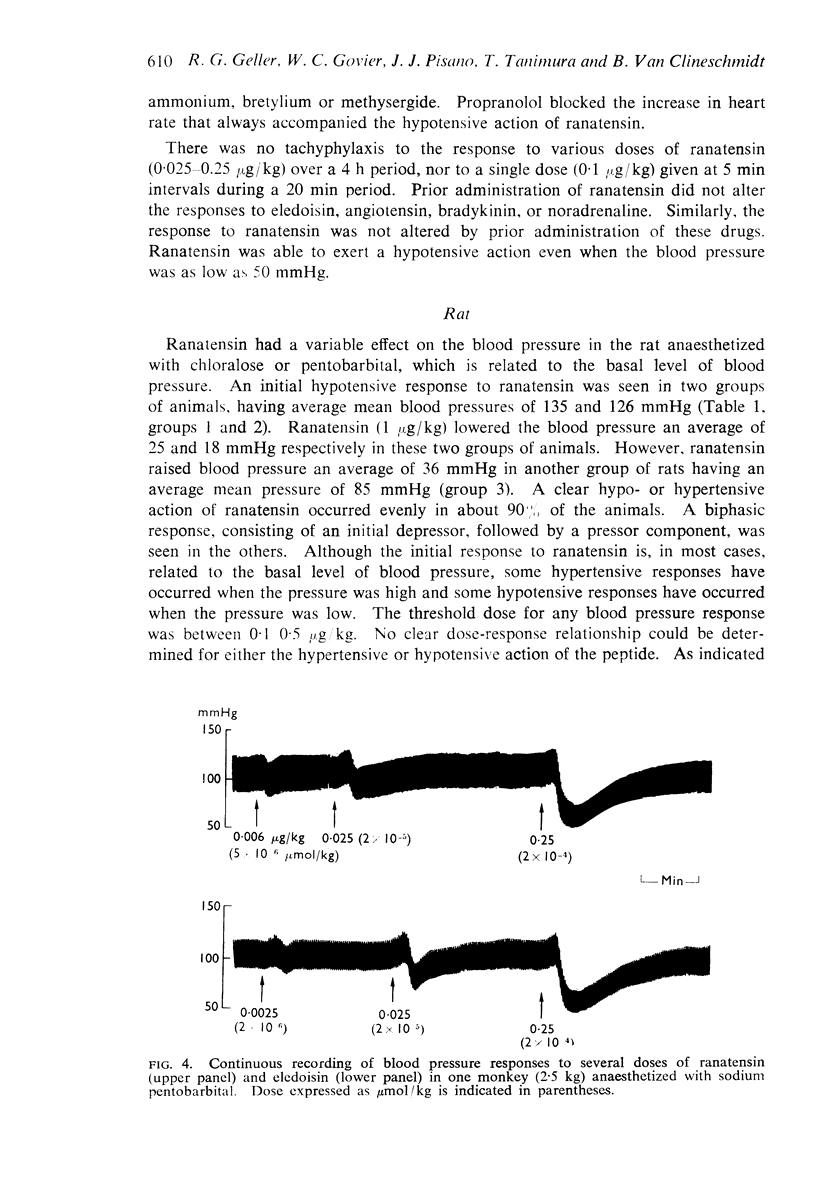
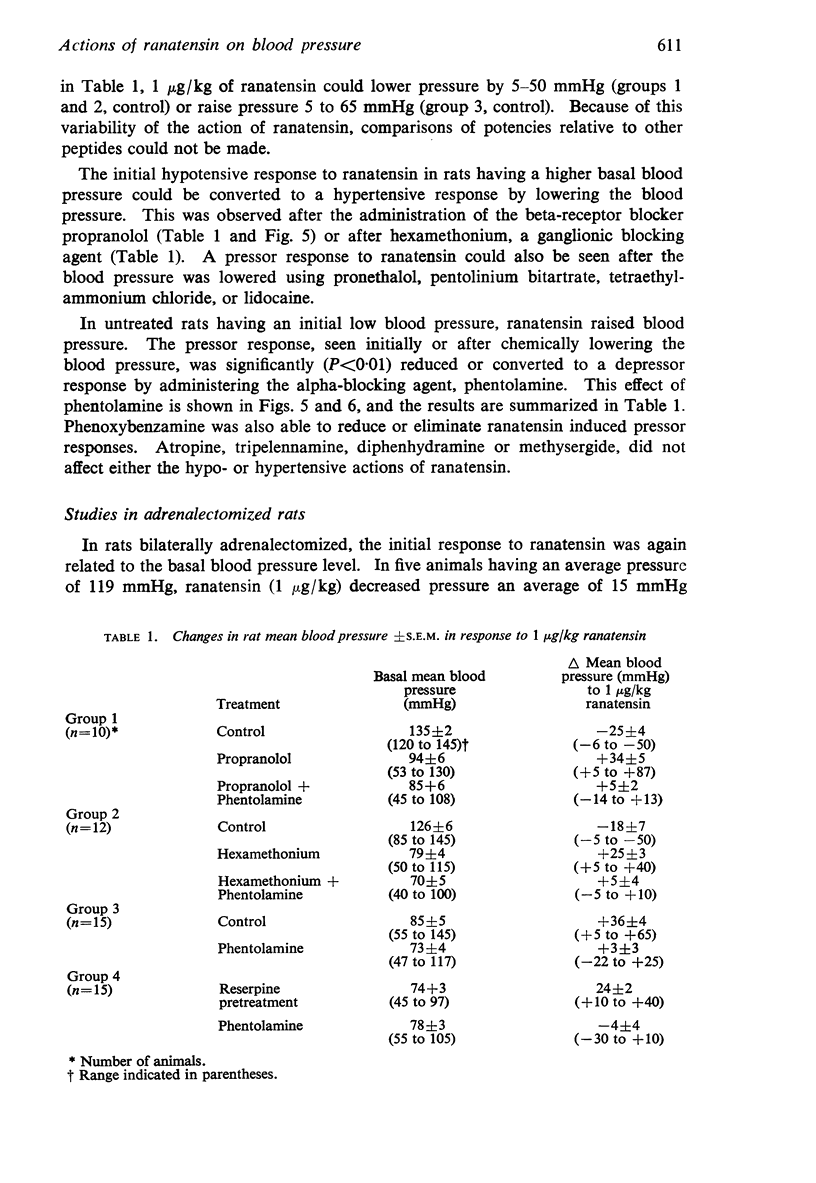
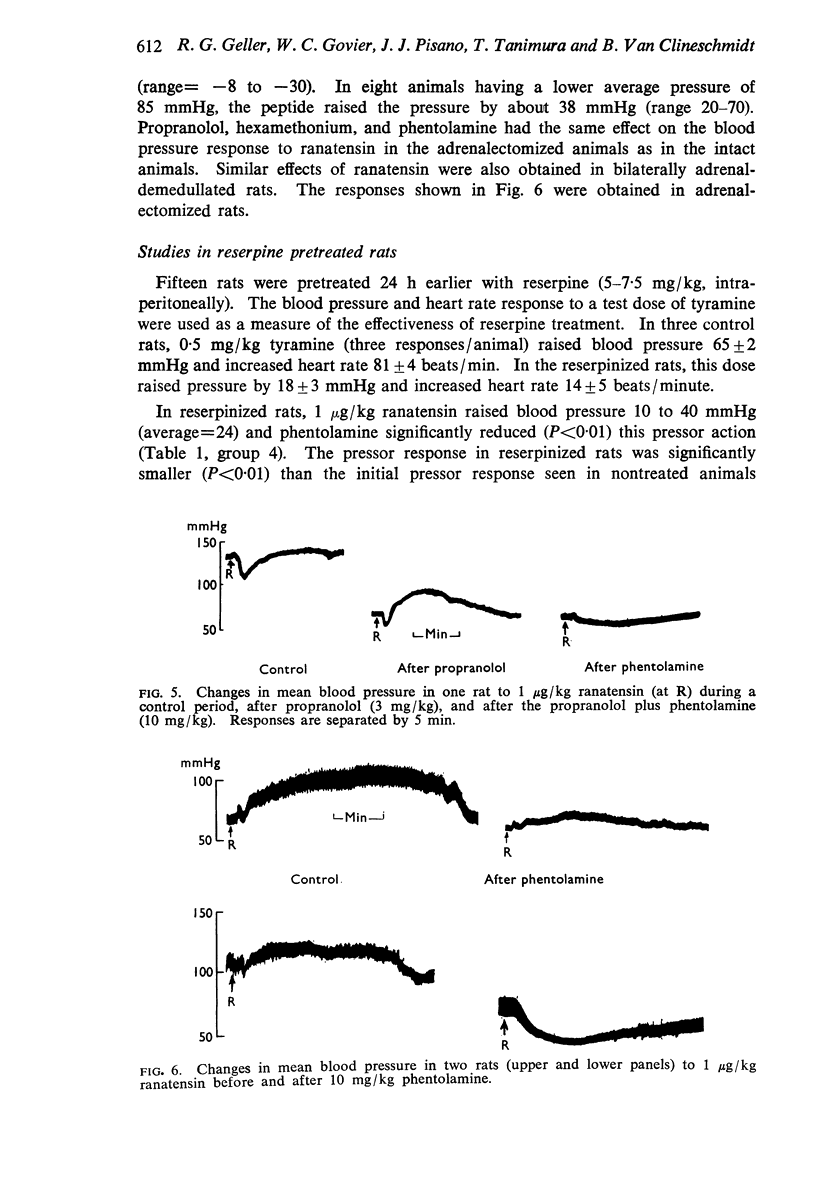
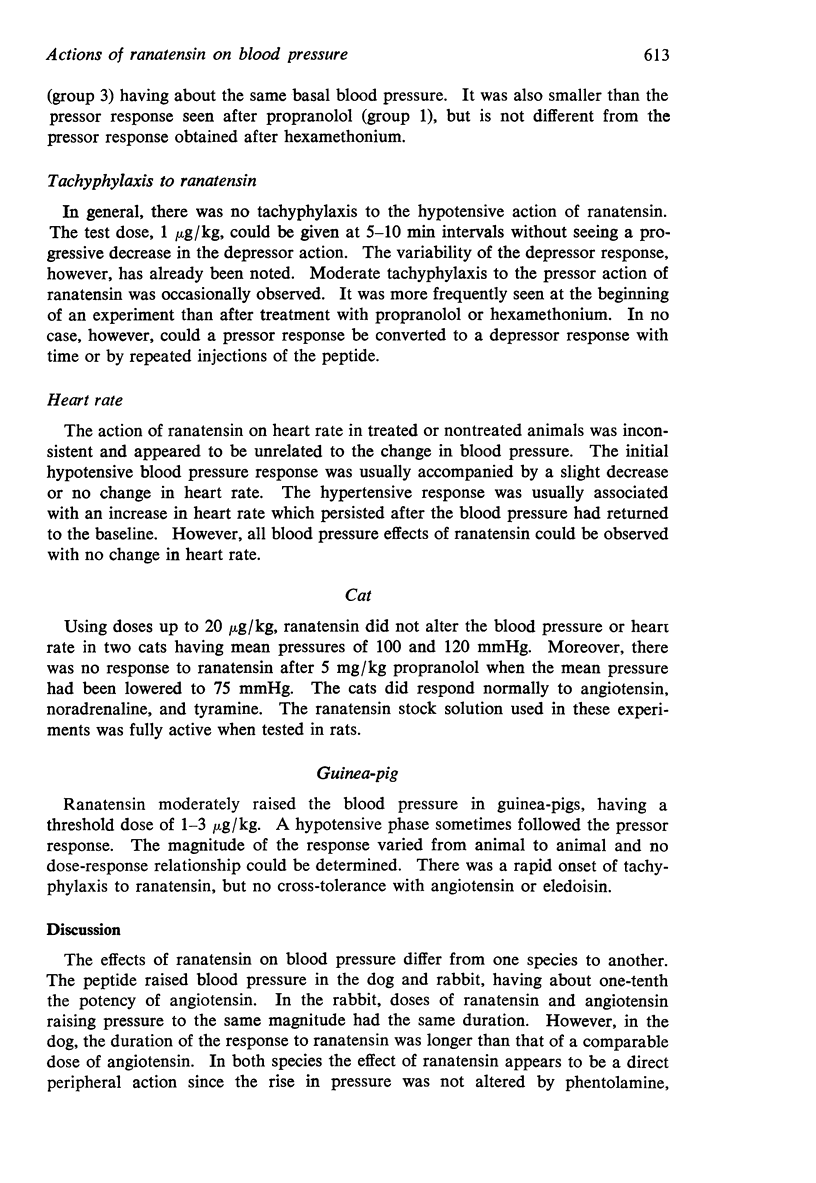
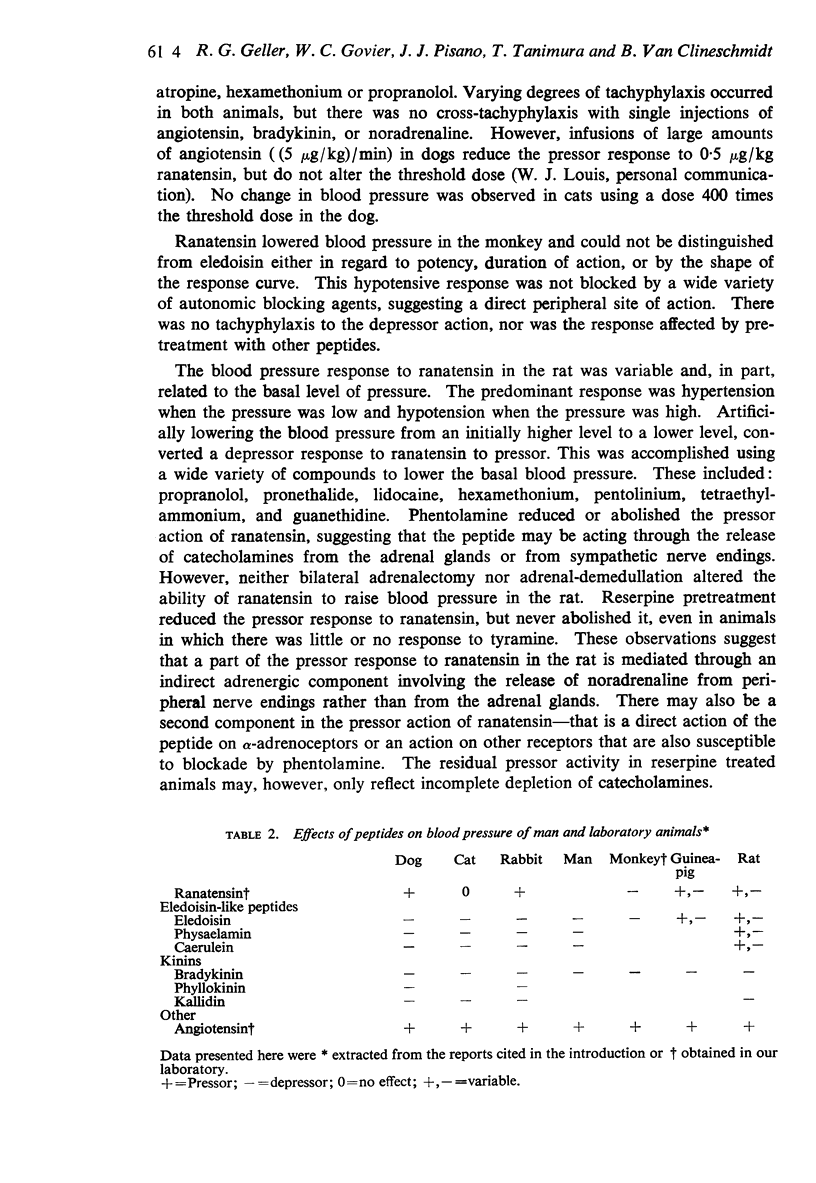
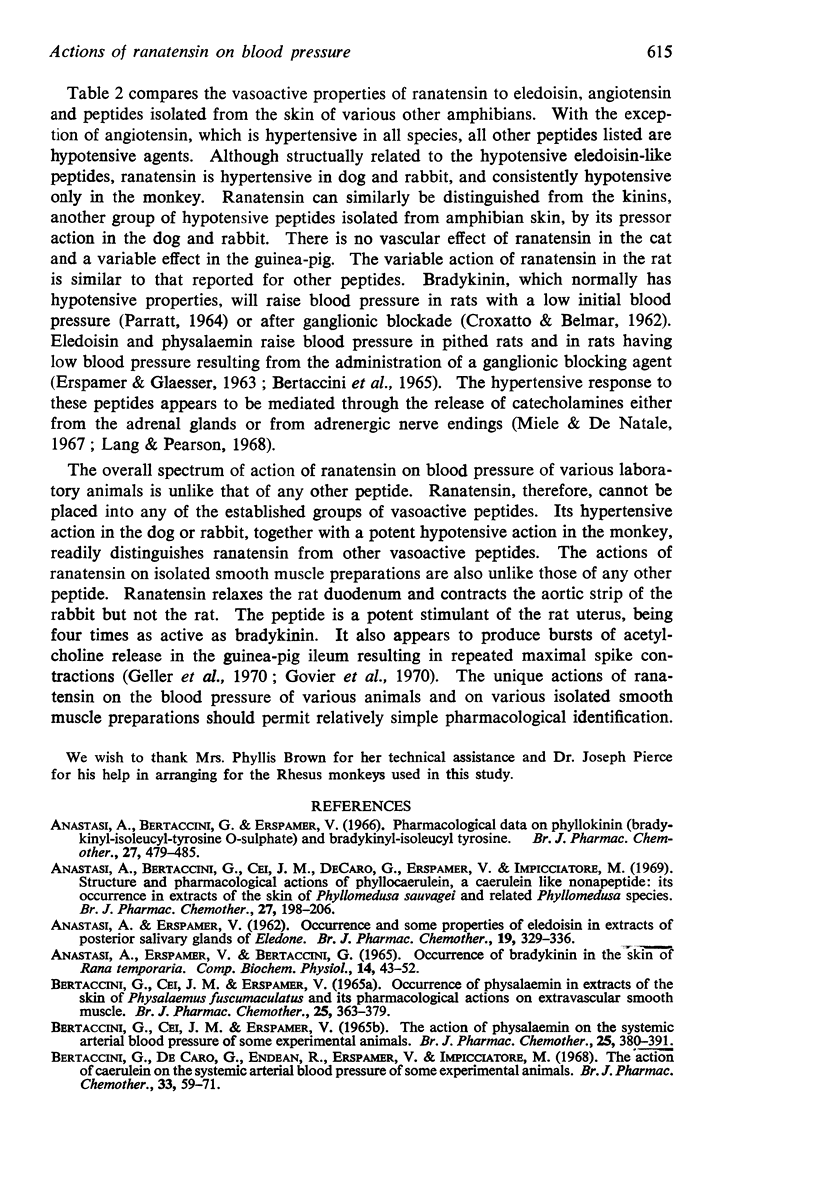
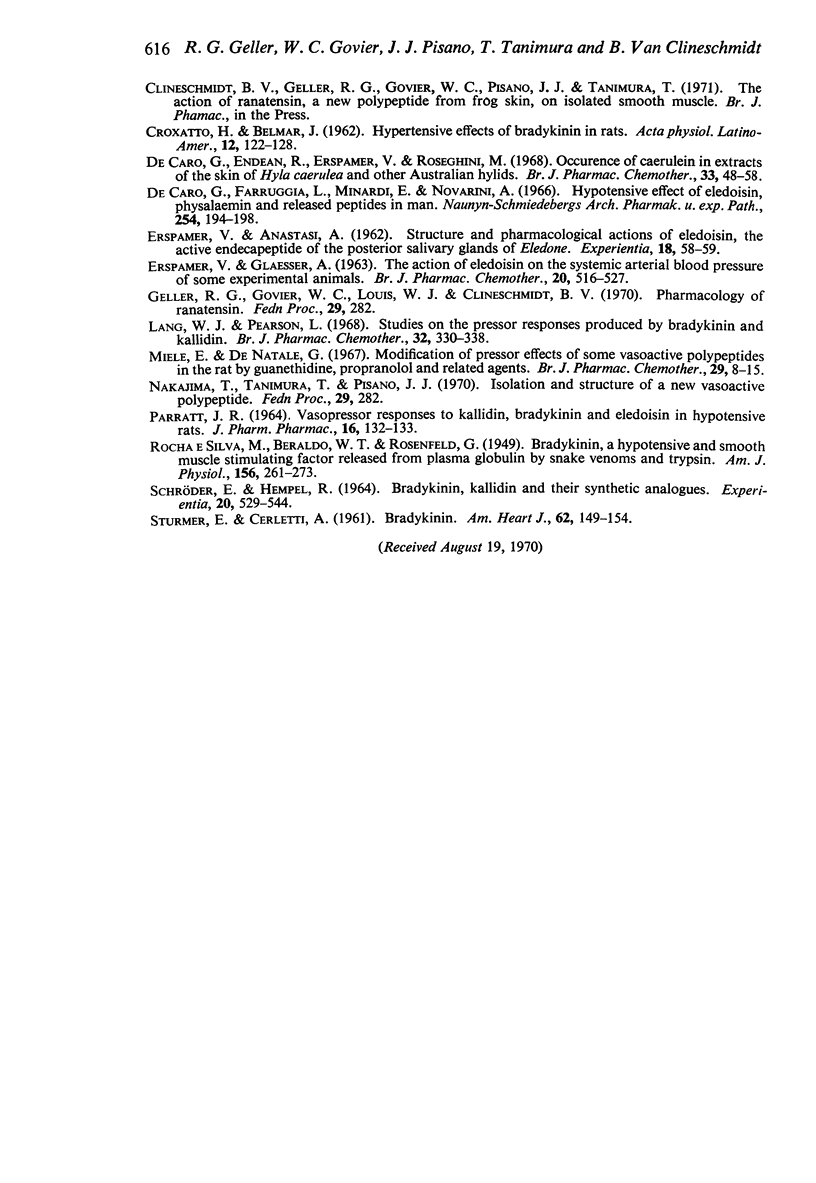
Selected References
These references are in PubMed. This may not be the complete list of references from this article.
- ANASTASI A., ERSPAMER V., BERTACCINI G. OCCURENCE OF BRADYKININ IN THE SKIN OF RANA TEMPORARIA. Comp Biochem Physiol. 1965 Jan;14:43–52. doi: 10.1016/0010-406x(65)90007-1. [DOI] [PubMed] [Google Scholar]
- ANASTASI A., ERSPAMER V. Occurrence and some properties of eledoisin in extracts of posterior salivary glands of Eledone. Br J Pharmacol Chemother. 1962 Oct;19:326–336. doi: 10.1111/j.1476-5381.1962.tb01197.x. [DOI] [PMC free article] [PubMed] [Google Scholar]
- Anastasi A., Bertaccini G., Cei J. M., De Caro G., Erspamer V., Impicciatore M. Structure and pharmacological actions of phyllocaerulein, a caerulein-like nonapeptide: its occurrence in extracts of the skin of Phyllomedusa sauvagei and related Phyllomedusa species. Br J Pharmacol. 1969 Sep;37(1):198–206. doi: 10.1111/j.1476-5381.1969.tb09538.x. [DOI] [PMC free article] [PubMed] [Google Scholar]
- Anastasi A., Bertaccini G., Erspamer V. Pharmacological data on phyllokinin (bradykinyl-isoleucyl-tyrosine o-sulphate) and bradykinyl-isoleucyl-tyrosine. Br J Pharmacol Chemother. 1966 Sep;27(3):479–485. doi: 10.1111/j.1476-5381.1966.tb01859.x. [DOI] [PMC free article] [PubMed] [Google Scholar]
- Bertaccini G., Cei J. M., Erspamer V. Occurrence of physalaemin in extracts of the skin of Physalaemus fuscumaculatus and its pharmacological actions on extravascular smooth muscle. Br J Pharmacol Chemother. 1965 Oct;25(2):363–379. doi: 10.1111/j.1476-5381.1965.tb02056.x. [DOI] [PMC free article] [PubMed] [Google Scholar]
- Bertaccini G., Cei J. M., Erspamer V. The action of physalaemin on the systemic arterial blood pressure of some experimental animals. Br J Pharmacol Chemother. 1965 Oct;25(2):380–391. doi: 10.1111/j.1476-5381.1965.tb02057.x. [DOI] [PMC free article] [PubMed] [Google Scholar]
- Bertaccini G., De Caro G., Endean R., Erspamer V., Impicciatore M. The action of caerulein on the systemic arterial blood pressure of some experimental animals. Br J Pharmacol Chemother. 1968 May;33(1):59–71. doi: 10.1111/j.1476-5381.1968.tb00474.x. [DOI] [PMC free article] [PubMed] [Google Scholar]
- CROXATTO H., BELMAR J. Hypertensive effects of bradykinin in rats. Acta Physiol Lat Am. 1962;12:122–128. [PubMed] [Google Scholar]
- De Caro G., Endean R., Erspamer V., Roseghini M. Occurrence of caerulein in extracts of the skin of Hyla caerulea and other Australian hylids. Br J Pharmacol Chemother. 1968 May;33(1):48–58. doi: 10.1111/j.1476-5381.1968.tb00473.x. [DOI] [PMC free article] [PubMed] [Google Scholar]
- De Caro G., Farruggia L., Minardi E., Novarini A. Hypotensive effect of eledoisin, physalaemin and related peptides in man. Naunyn Schmiedebergs Arch Pharmakol Exp Pathol. 1966;254(2):194–198. doi: 10.1007/BF00535905. [DOI] [PubMed] [Google Scholar]
- ERSPAMER V., ANASTASI A. Structure and pharmacological actions of eledoisin, the active endecapeptide of the posterior salivary glands of Eledone. Experientia. 1962 Feb 15;18:58–59. doi: 10.1007/BF02138250. [DOI] [PubMed] [Google Scholar]
- Lang W. J., Pearson L. Studies on the pressor responses produced by bradykinin and kallidin. Br J Pharmacol Chemother. 1968 Feb;32(2):330–338. doi: 10.1111/j.1476-5381.1968.tb00976.x. [DOI] [PMC free article] [PubMed] [Google Scholar]
- PARRATT J. R. VASOPRESSOR RESPONSES TO KALLIDIN, BRADYKININ AND ELEDOISIN IN HYPOTENSIVE RATS. J Pharm Pharmacol. 1964 Feb;16:132–133. doi: 10.1111/j.2042-7158.1964.tb07434.x. [DOI] [PubMed] [Google Scholar]
- STURMER E. [Bradykinin]. Am Heart J. 1961 Aug;62:149–154. doi: 10.1016/0002-8703(61)90313-1. [DOI] [PubMed] [Google Scholar]
- Schröder E., Hempel R. Bradykinin, kallidin, and their synthetic analogues. Experientia. 1964 Oct 15;20(10):529–544. doi: 10.1007/BF02150278. [DOI] [PubMed] [Google Scholar]


